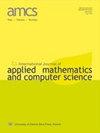考虑到嫌疑人身份不明,法医鉴定司机身份
IF 1.2
4区 计算机科学
Q3 AUTOMATION & CONTROL SYSTEMS
International Journal of Applied Mathematics and Computer Science
Pub Date : 2021-12-01
DOI:10.34768/amcs-2021-0040
引用次数: 2
摘要
法医学的一个主要焦点是基于在犯罪现场和数字领域发现的不同种类的证据来识别个人。在这里,我们评估了使用车载数字数据来捕捉个人自然驾驶行为以识别他们的潜力。我们制定了一个肇事逃逸车祸的法医场景,一个已知的嫌疑人和一个未知的嫌疑人是事故中的实际司机。本研究的具体目的是:(i)考虑到未知嫌疑人的场景,进一步开发数字取证中的驾驶员识别工作流程,以及(ii)评估单类分类与多类分类在此任务中的潜力。开发的工作流程表明,在机器学习在数字取证中的应用中,提前决定统计应用、数据挖掘或假设检验是很重要的。此外,在统计模型质量方面,多类分类优于单类分类。使用多类分类,可以在数据挖掘和假设检验两种类型的应用中有助于识别肇事逃逸事故中的驾驶员。模型质量在已经使用的个人法医鉴定方法的范围内。本文章由计算机程序翻译,如有差异,请以英文原文为准。
Forensic driver identification considering an unknown suspect
Abstract One major focus in forensics is the identification of individuals based on different kinds of evidence found at a crime scene and in the digital domain. Here, we assess the potential of using in-vehicle digital data to capture the natural driving behavior of individuals in order to identify them. We formulate a forensic scenario of a hit-and-run car accident with a known and an unknown suspect being the actual driver during the accident. Specific aims of this study are (i) to further develop a workflow for driver identification in digital forensics considering a scenario with an unknown suspect, and (ii) to assess the potential of one-class compared to multi-class classification for this task. The developed workflow demonstrates that in the application of machine learning in digital forensics it is important to decide on the statistical application, data mining or hypothesis testing in advance. Further, multi-class classification is superior to one-class classification in terms of statistical model quality. Using multi-class classification it is possible to contribute to the identification of the driver in the hit-and-run accident in both types of application, data mining and hypothesis testing. Model quality is in the range of already employed methods for forensic identification of individuals.
求助全文
通过发布文献求助,成功后即可免费获取论文全文。
去求助
来源期刊
CiteScore
4.10
自引率
21.10%
发文量
0
审稿时长
4.2 months
期刊介绍:
The International Journal of Applied Mathematics and Computer Science is a quarterly published in Poland since 1991 by the University of Zielona Góra in partnership with De Gruyter Poland (Sciendo) and Lubuskie Scientific Society, under the auspices of the Committee on Automatic Control and Robotics of the Polish Academy of Sciences.
The journal strives to meet the demand for the presentation of interdisciplinary research in various fields related to control theory, applied mathematics, scientific computing and computer science. In particular, it publishes high quality original research results in the following areas:
-modern control theory and practice-
artificial intelligence methods and their applications-
applied mathematics and mathematical optimisation techniques-
mathematical methods in engineering, computer science, and biology.

 求助内容:
求助内容: 应助结果提醒方式:
应助结果提醒方式:


